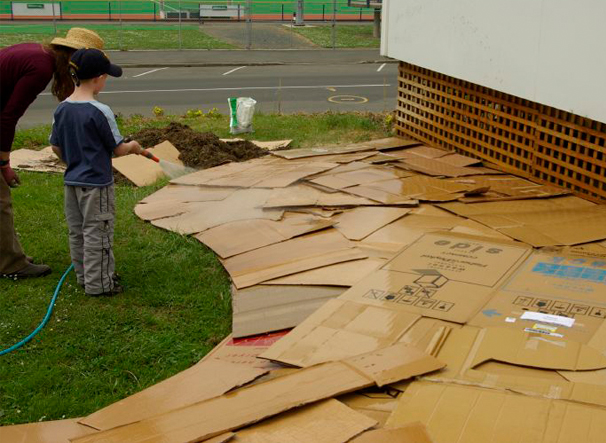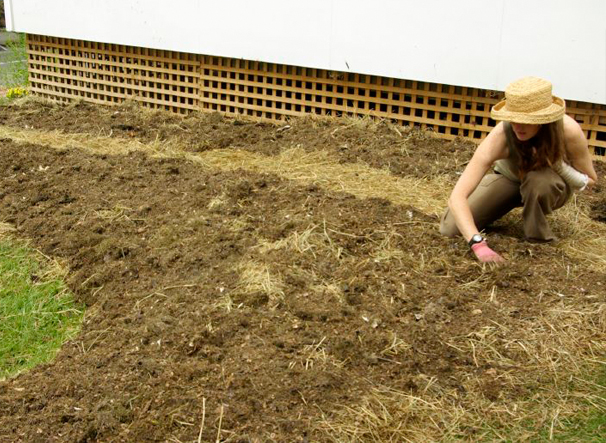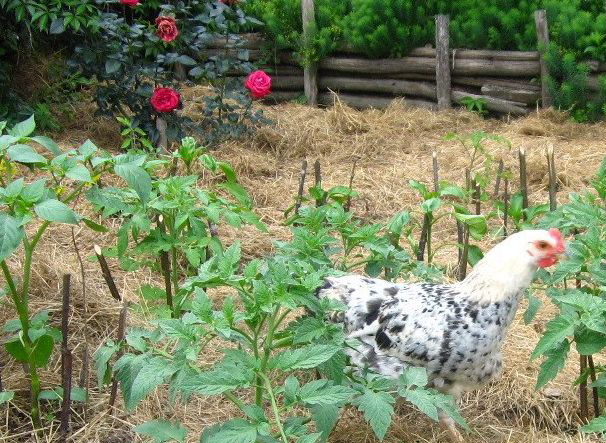Posted by Kendal at Gubba
28th Jul 2023
A step-by-step guide to no-dig gardening

You may have heard the term “no-dig gardening” being bandied about recently. Also known as “no-till” or “lasagne” gardening, this method is certainly becoming popular among garden enthusiasts and even farmers around the globe - and we can understand why. No-dig gardening is rooted in ecological principles and sustainable practices; but it also offers a host of practical benefits to the gardener, from less groundwork & maintenance, to healthier soil and reduced weed growth. If you’re curious about this method, and perhaps want to give it a go in your own garden, this guide is for you.
What is it?
As the name suggests, no-dig gardening involves growing plants without disturbing the existing soil structure. No digging or tilling required! Once you’ve set up your no-dig garden bed it can be left undisturbed (aside from planting new seeds & plants, and topping up the surface with mulch as it breaks down over time). Unlike traditional gardening methods that require turning the soil, no-dig gardening focuses on creating and nurturing healthy, biodiverse soil ecosystems through the layering of organic matter. This method mimics nature's way of composting, allowing the soil to develop naturally and sustainably.

A few key benefits of no-dig gardening include…
Enhanced Soil Health: Leaving your soil undisturbed allows beneficial soil organisms to thrive. Healthy soil structure creates the foundation for good microorganism and earthworm activity. The subsequent improved nutrient cycling and better water retention = more robust and productive plants.
Reduced Weed Growth: By layering organic mulch or compost on top of the soil, no-dig gardening suppresses weed growth.
Natural aeration & drainage: Microbes, earthworms & other beneficial bugs create tunnels in your soil, resulting in better aeration and drainage.
Biodiversity: A more balanced ecosystem within your soil attracts beneficial insects and wildlife. This in turn helps control pests and diseases, reducing the need for chemical interventions.
Slower nutrient release: As organic matter in your soil breaks down, essential nutrients are released to your plants. Digging into your soil increases the speed these nutrients are released. The no-dig method allows nutrients to be released naturally at a slower, steadier rate, which is better for plant growth.
Sustainability: No-dig gardening reduces soil erosion, and increased water retention allows you to conserve water.
All of this results in less manual intervention from you, and better plant growth, health & productivity.

Get started with no-dig gardening
- Choose a sunny site (at least 6 hours of sunlight per day). Avoid areas prone to waterlogging or heavy shade. You can create your no-dig garden bed over grass, dirt, or even concrete. You can also use a raised bed or container.
- You’ll need to gather a range of organic materials: compost, straw, leaves, grass clippings, newspaper, twigs & branches, woodchips, aged manure, seaweed, coffee grounds, etc. You can use store-bought compost, but as always we recommend home-made compost if you have it, as it contains a broader range of nutrients.
- Clear any existing weeds or vegetation in your chosen area. If you’re creating your garden bed over lawn or dirt, use a thick layer of cardboard or several layers of newspaper to smother grass and weeds. Remember to wet it down with water before layering on your organic material in the next step.
- Spread a 10-15 cm layer of compost, well-rotted manure or wood chips over the cardboard / newspaper base. Top this with alternating layers of your organic matter - straw, leaves, grass clippings, more compost etc. (You can see why it’s also called the ‘lasagne’ method!). Water each layer as you build to encourage decomposition and settling.
- Top your no-dig garden bed with a generous layer of compost, and plant in your seeds / seedlings. Finish with some pea straw mulch around your plants.
Over time, the layers in your garden bed will gradually break down and create a nutrient-rich growing medium. As this happens, you’ll notice the height will start to drop - keep it topped up with alternating layers of organic matter to keep the process going.

Tips for maintaining Your no-dig garden
- Mulch, mulch, and more mulch! Mulching is going to replace digging. This is the key to successful no-dig gardening, and is how you enrich soil, suppress weeds and conserve moisture. Regularly add layers of mulch, including leaf litter, wood chips, straw, grass clippings and compost. Keep mulch pulled back from plant stems, especially seedlings.
- Rotate your crops each season to prevent nutrient depletion, and minimise the risk of disease and pests building up in the soil.
- Don’t overwater your garden. As your soil will retain more moisture, you won’t need to water as often - overwatering could cause the soil to compact down.
- Continue composting kitchen scraps and garden waste to maintain a steady supply of compost for your no-dig garden. Your organic waste is such a valuable resource - don’t throw it out, compost it yourself to make the most of all those nutrients!
Images:
Image1 by woodleywonderworks (licensed under CC BY 2.0.)
Image 2 & 3 by Samuel Mann (licensed under CC BY 2.0.)
Image 3 by hardworkinghippy : La Ferme de Sourrou (licensed under CC BY-SA 2.0.)


























